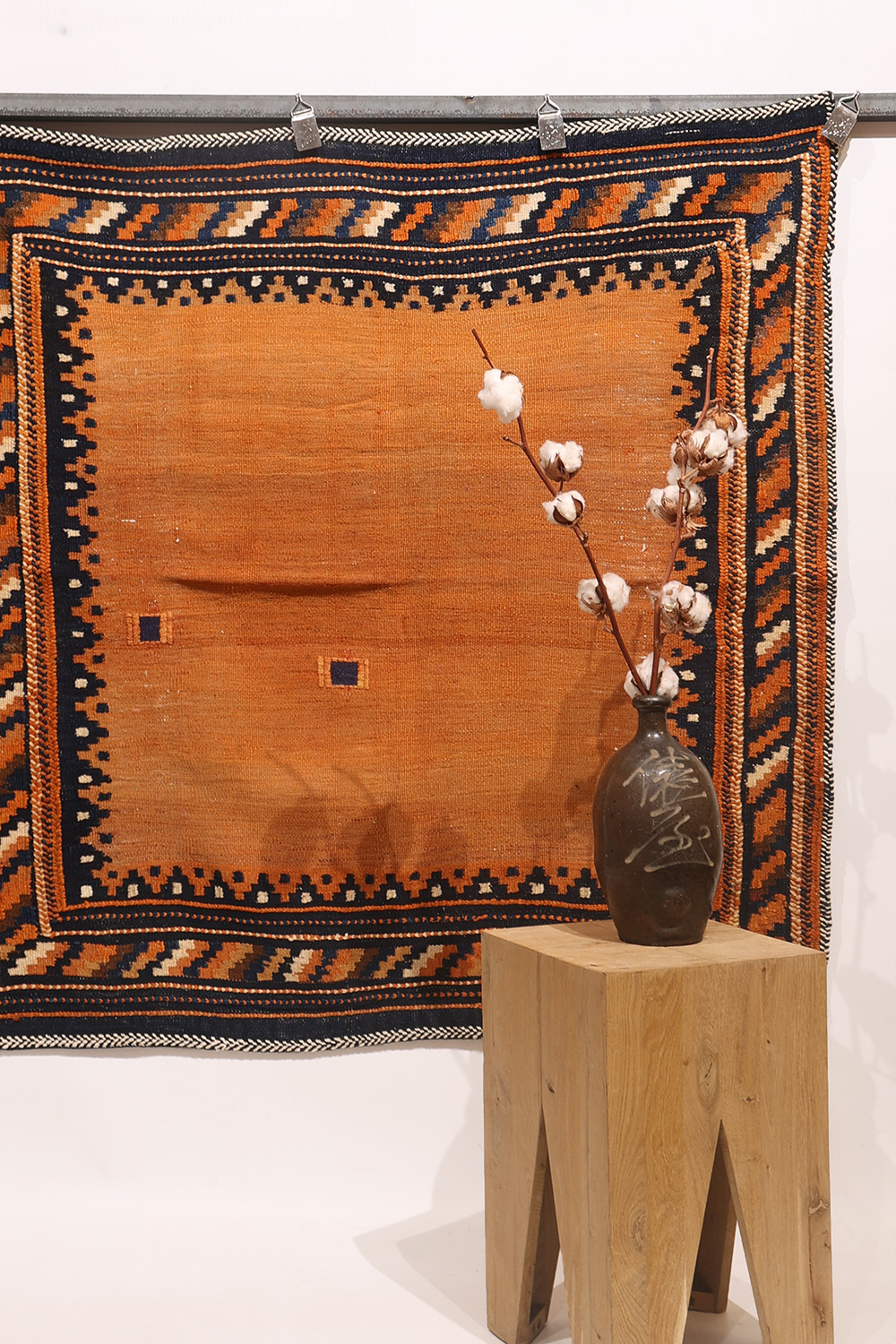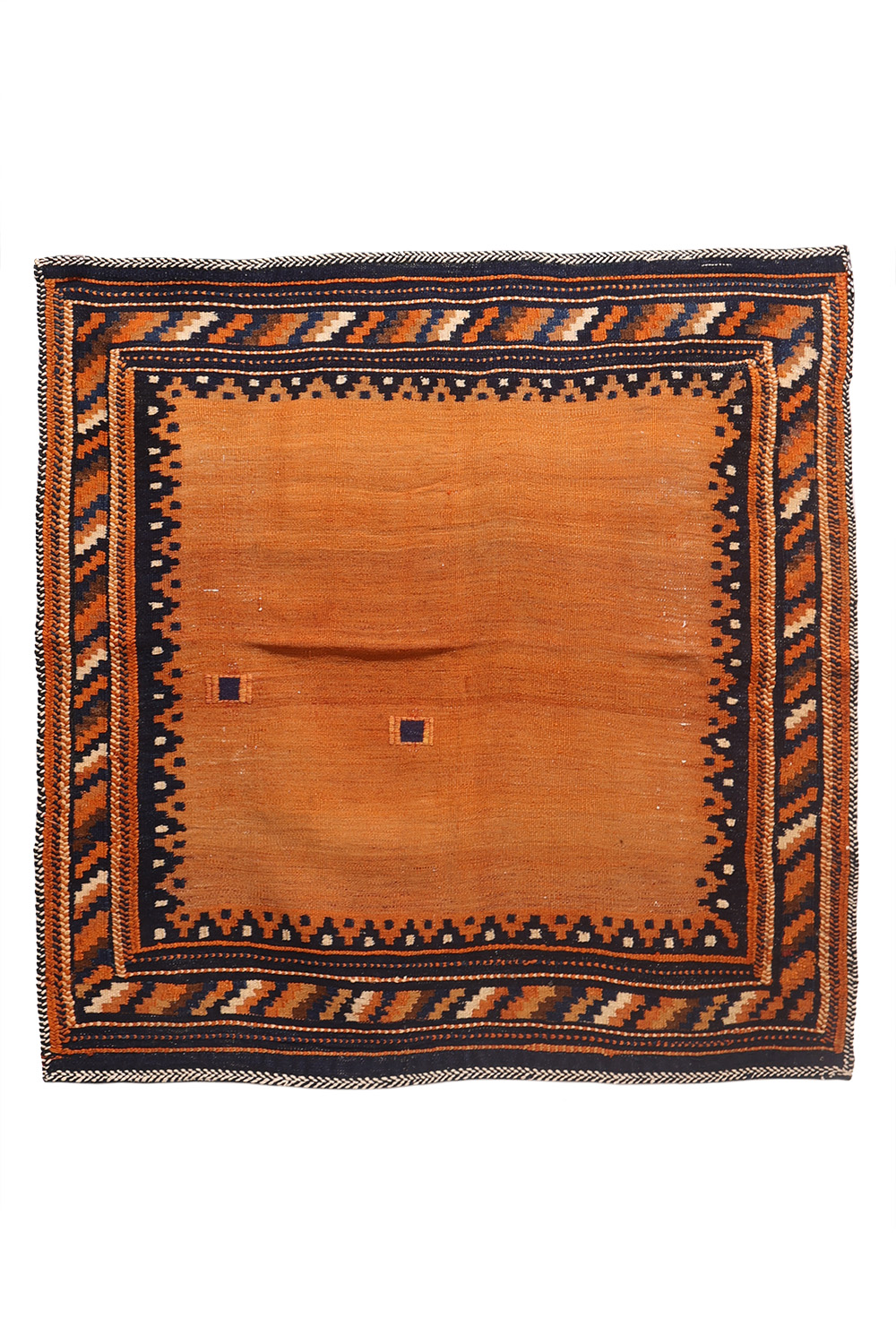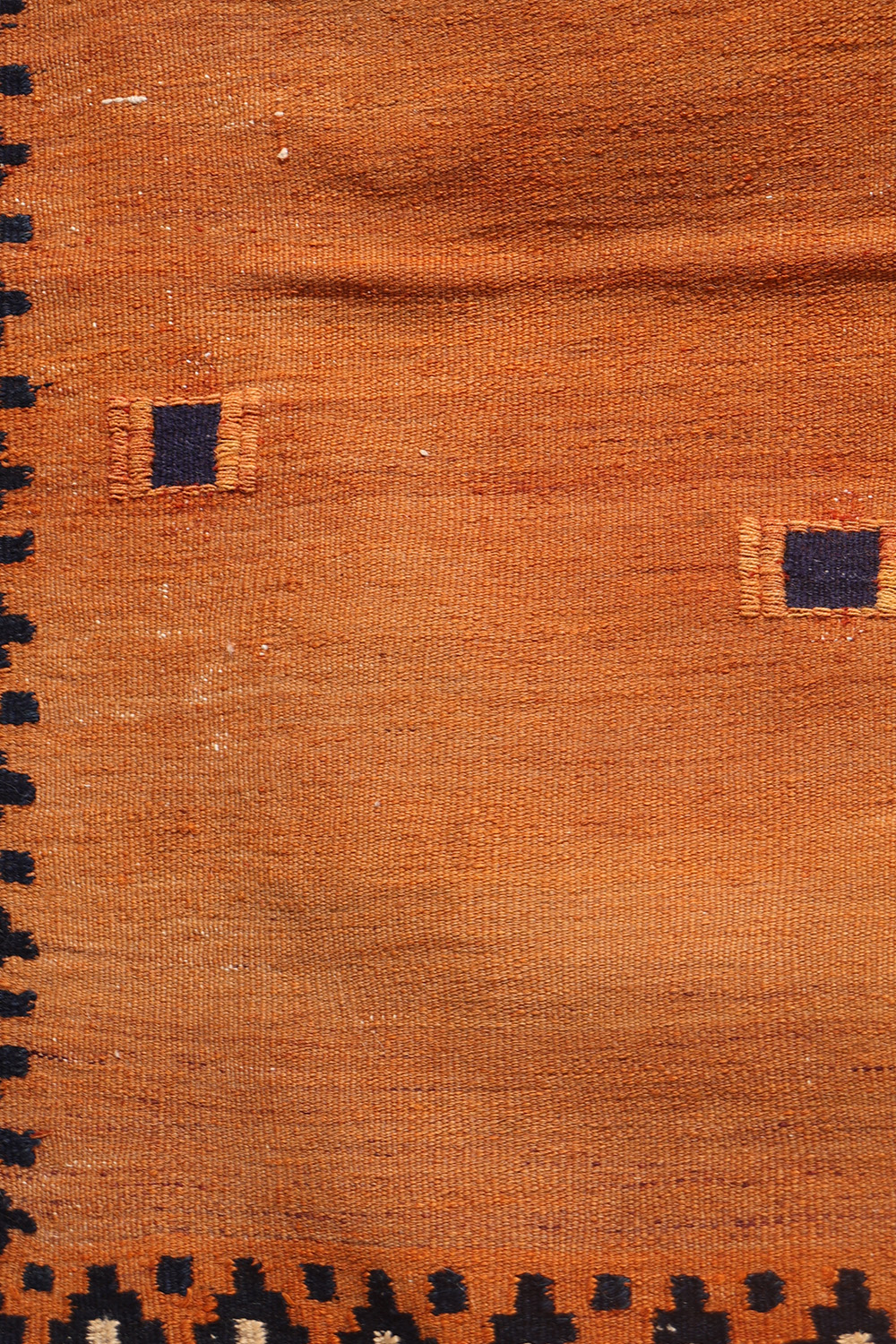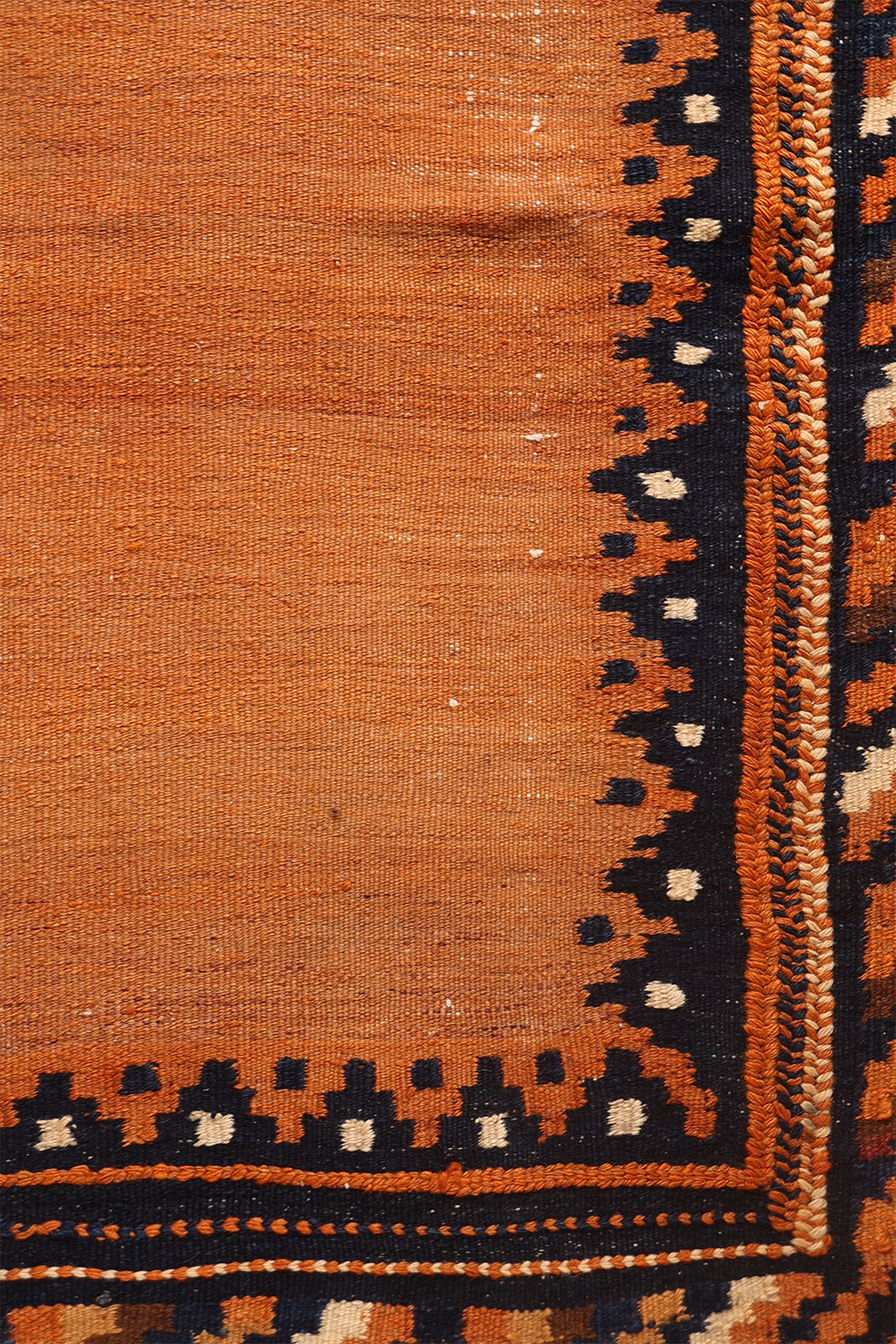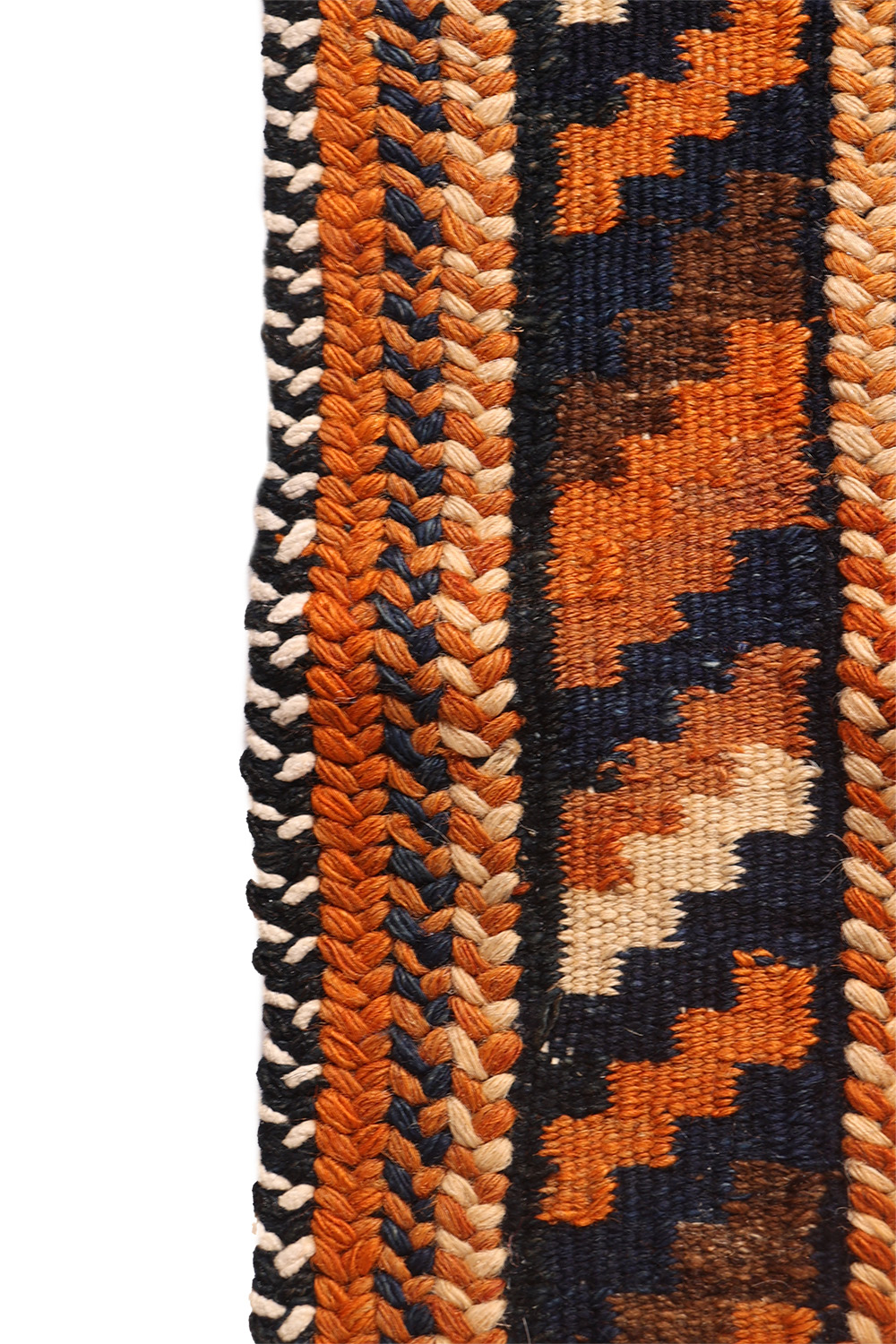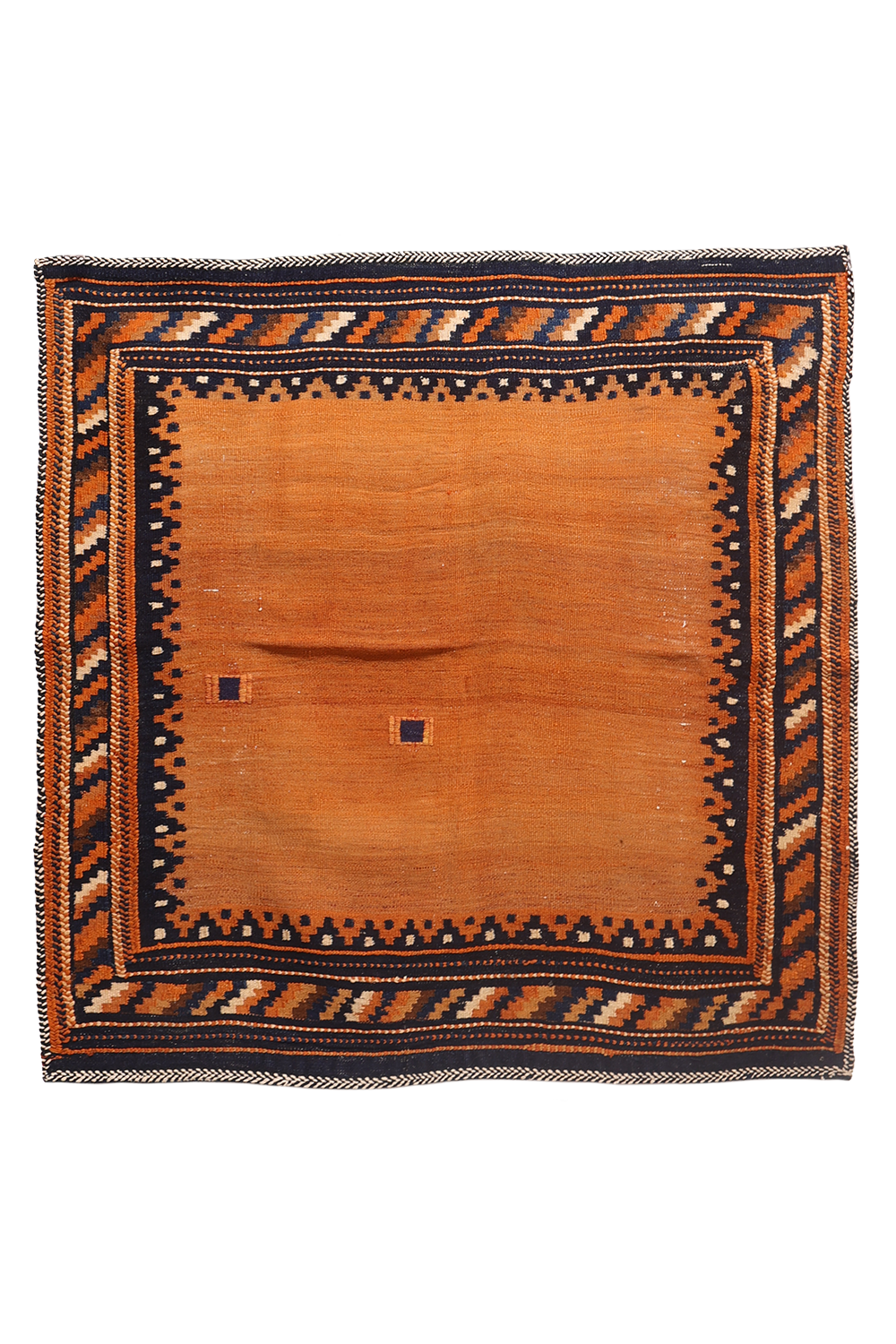A Beautiful 1960s minimalist sofreh or kilim in which to make or store bread, with a pumpking colour background. The minimal field contrasts with the more elaborate border with diagonal motifs. It has two old repairs in the central field, that were skillfully rewoven by adding the two square motifs in the central field, full of charm.
Although the piece has been professionally washed in Iran, the back of the piece still retains some flour left overs, witness to the original use of this tribal and authentic piece.
All the dyes are natural.
Material: 100% hand-spun sheep wool
Size: 115×115 cms
Origin: Afshar tribe, Iran
Date of weaving: 1960s
Sofrehs take their name from the Farsi (Persian) word for cloth and are used for several functions connected with preparing and eating food. Eating cloths are normally referred to simply as sofrehs and vary enormously in size-from small, rectangular mats for personal use to extremelly long, narrow runners for communal eating. They are woven in several standard techniques, including alternating bands of kilim and pile rug, and produced by a number of nomadic and tribal weavers in Iran, Afghanistan, Central Asia and to a lesser degree, elsewhere.
1 in stock
| Weight | 3.2 kg |
|---|
